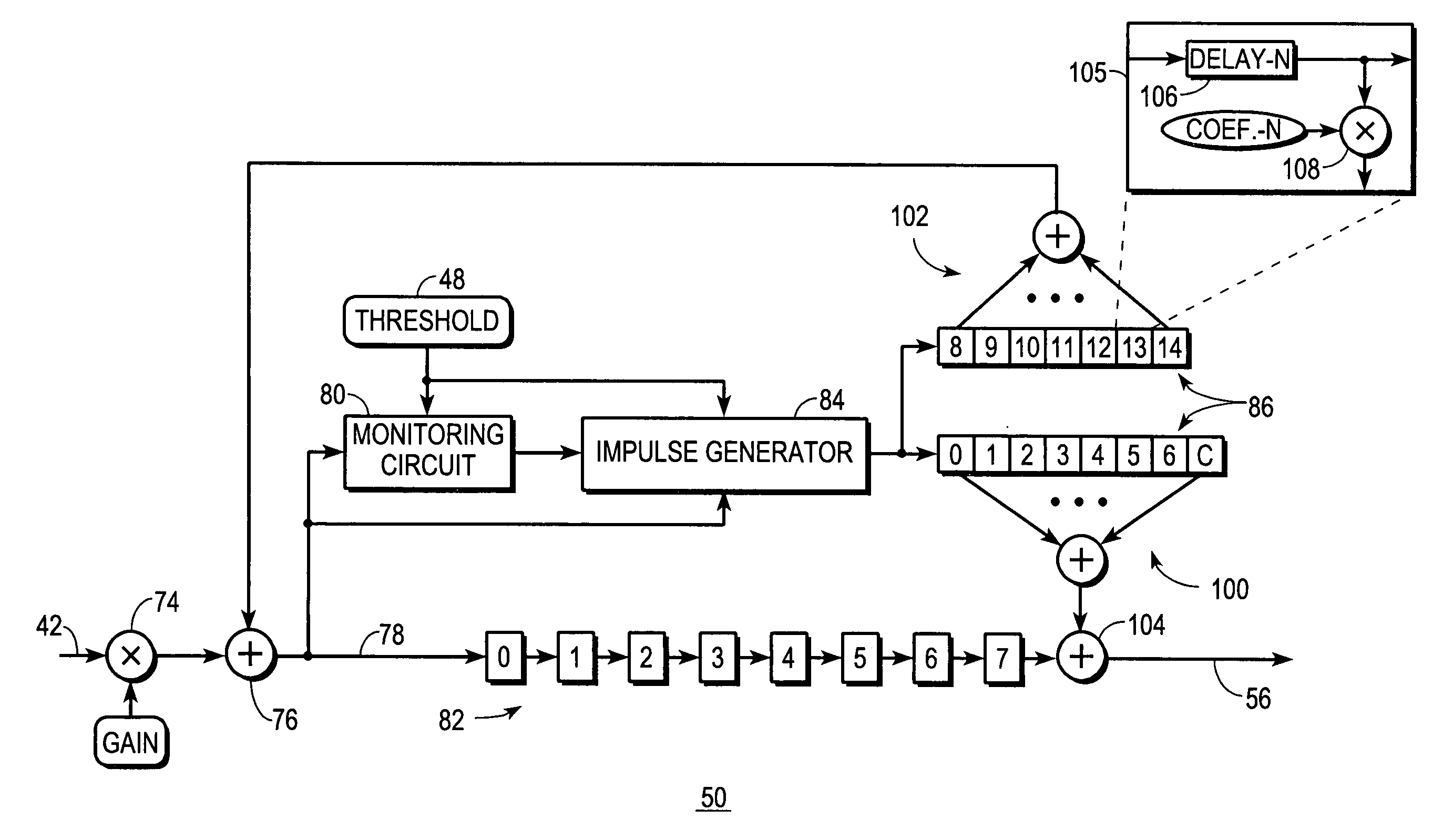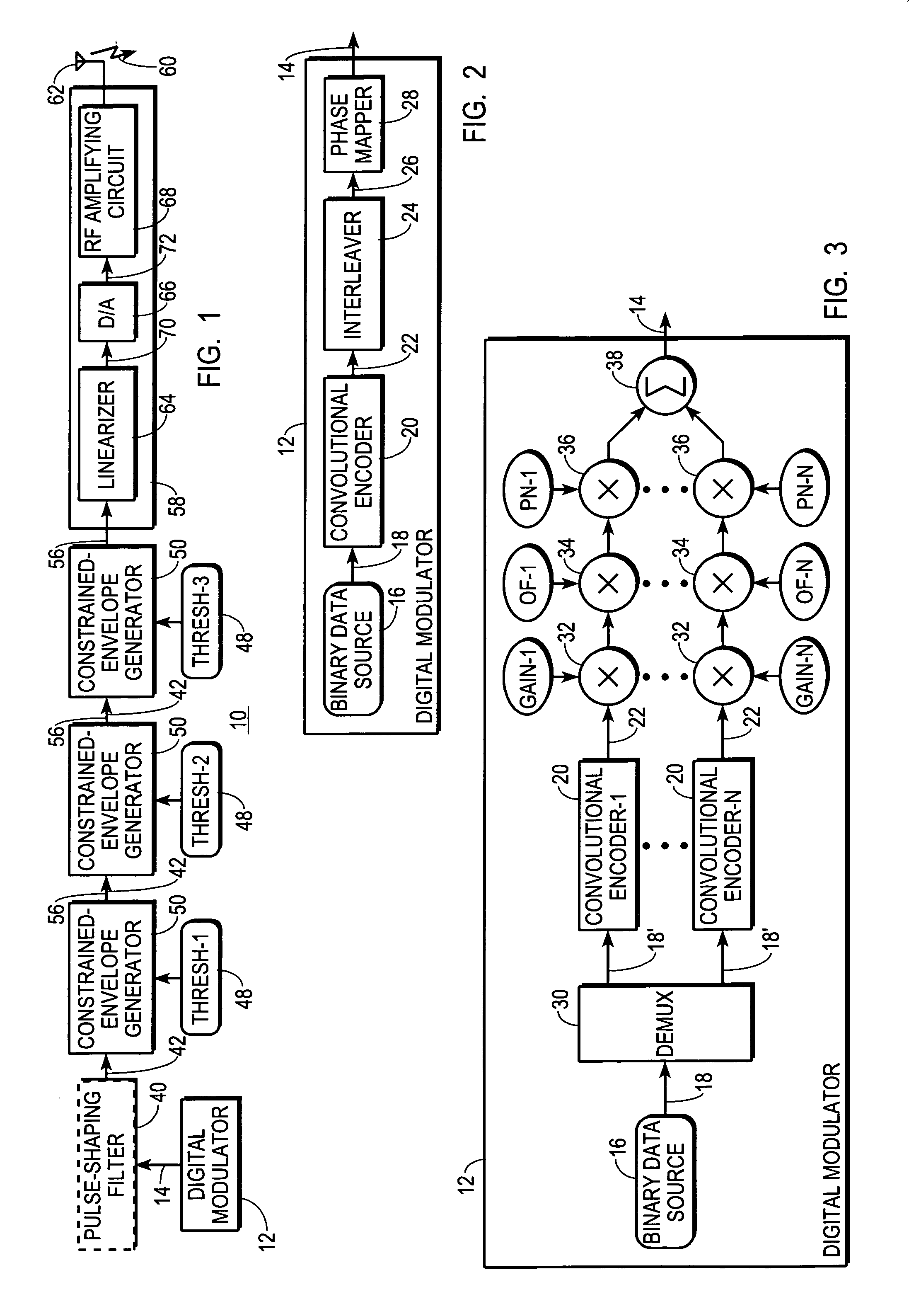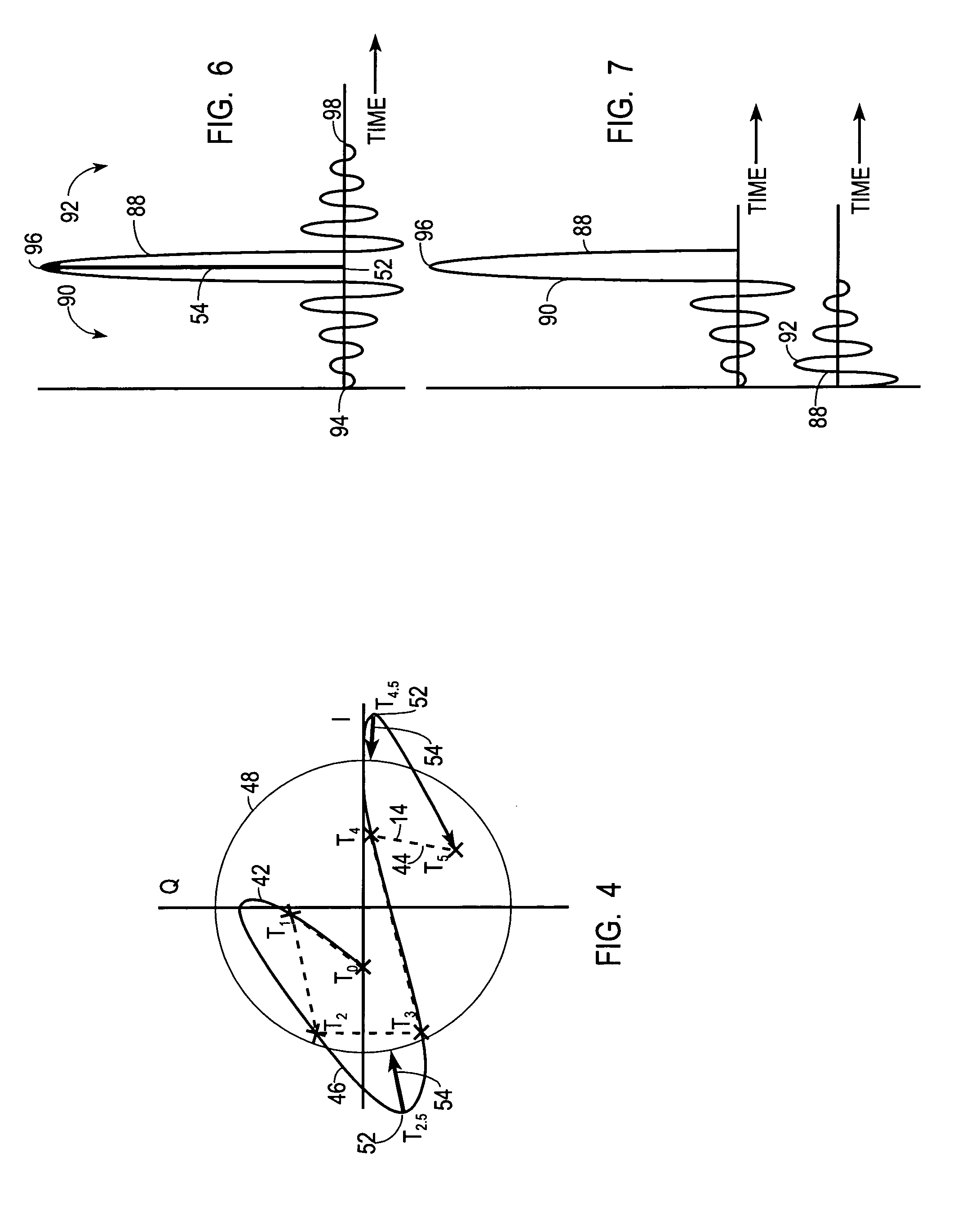Constrained-envelope digital communications transmitter and method therefor
a digital communication transmitter and envelope technology, applied in the field of electronic communication, can solve the problems of increasing the peak power needed to faithfully reproduce the filtered communication signal increasing the cost of power amplifiers, etc., to achieve the effect of improving the constrained envelope digital communication transmitter and method, reducing the peak-to-average power ratio, and increasing the predetermined bandwidth
- Summary
- Abstract
- Description
- Claims
- Application Information
AI Technical Summary
Benefits of technology
Problems solved by technology
Method used
Image
Examples
first embodiment
[0042]FIG. 5 shows a block diagram of a constrained-envelope generator 50 usable in transmitter 10. The FIG. 5 embodiment of constrained-envelope generator 50 may be used in the position of any one of the constrained-envelope generators 50 depicted in FIG. 1.
[0043]Constrained-envelope generator 50 receives a spectrally-constrained communication signal 42 at an input of an optional scaling stage 74. At scaling stage 74, a gain factor may be applied as needed by the application. For example, in some applications power management techniques may require communication devices located closer together to operate at lower power levels than father-apart communication devices so long as an adequate signal-to-noise ratio may be delivered at the lower power level. Such power management techniques may be applied at scaling stage 74 if not applied elsewhere in transmitter 10 (FIG. 1).
[0044]After scaling, the spectrally constrained signal stream is applied to a combining circuit 76. Combining circ...
second embodiment
[0057]FIG. 8 shows a block diagram of a constrained-envelope generator 50. The embodiment of constrained-envelope generator 50 depicted in FIG. 8 performs an equivalent function to that discussed above in connection with FIG. 5, but incorporates the function of pulse shaping filter 40 (FIG. 1) therein. The FIG. 8 embodiment may be used for the upstream-most one of constrained-envelope generators 50 or as a sole constrained-envelope generator 50 in a transmitter 10 (FIG. 1).
[0058]Like the FIG. 5 embodiment, constrained-envelope generator 50 configured in accordance with the FIG. 8 embodiment includes monitoring circuit 80 and impulse generator 84 which are responsive to overpeak-capable signal stream 78 and to threshold 48 and which operate in the manner discussed above to identify overpeak events 52 and to generate corrective impulses 54. However, shaped pulse 88 is generated in combination with pulse shaping performed on spectrally-unconstrained communication signal 14. Like the FI...
PUM
 Login to View More
Login to View More Abstract
Description
Claims
Application Information
 Login to View More
Login to View More - R&D
- Intellectual Property
- Life Sciences
- Materials
- Tech Scout
- Unparalleled Data Quality
- Higher Quality Content
- 60% Fewer Hallucinations
Browse by: Latest US Patents, China's latest patents, Technical Efficacy Thesaurus, Application Domain, Technology Topic, Popular Technical Reports.
© 2025 PatSnap. All rights reserved.Legal|Privacy policy|Modern Slavery Act Transparency Statement|Sitemap|About US| Contact US: help@patsnap.com



